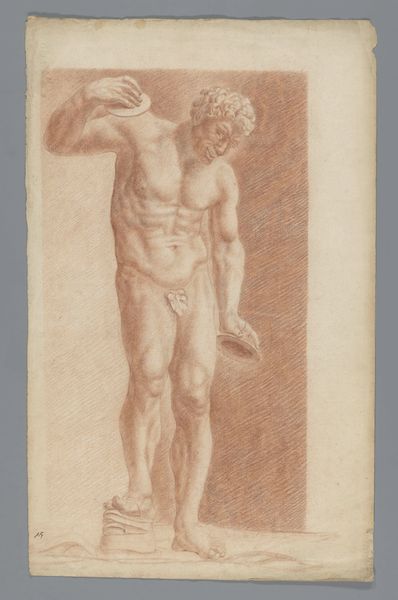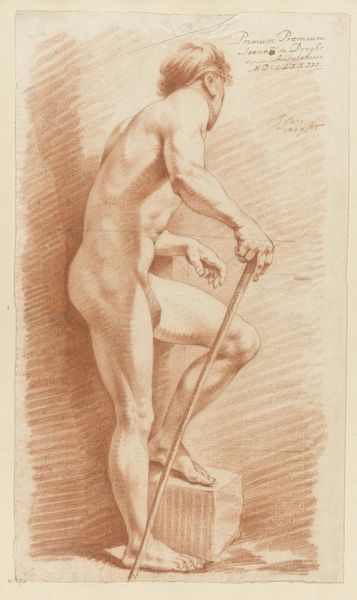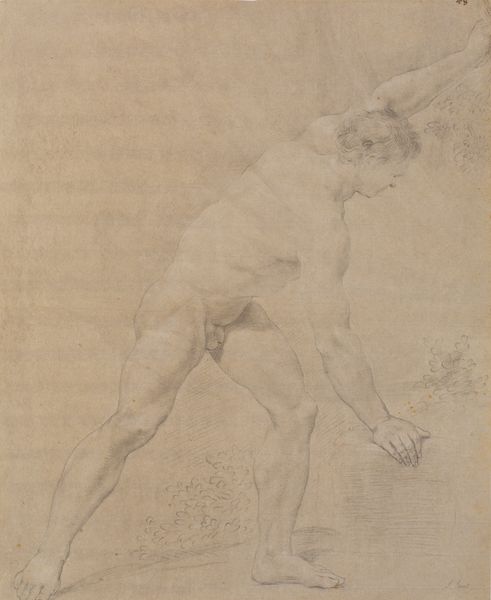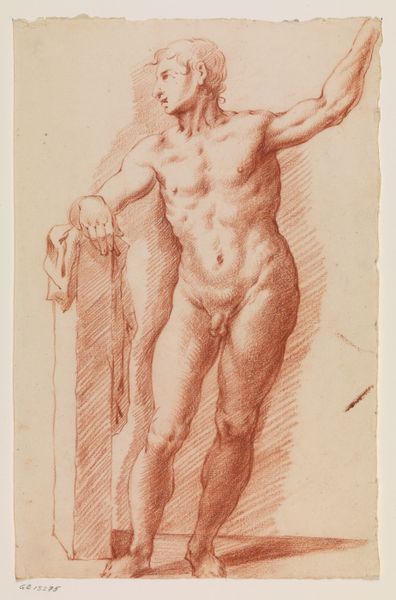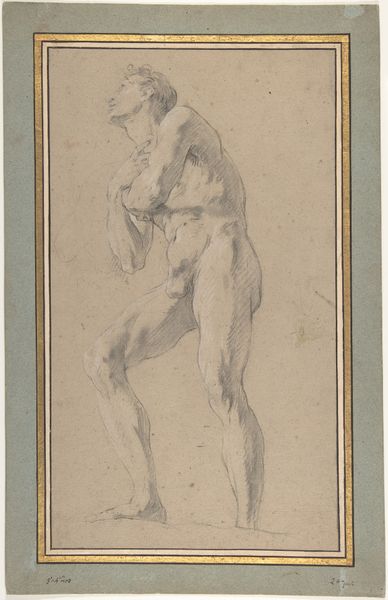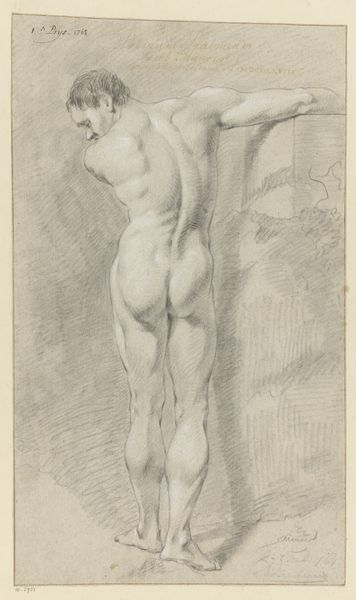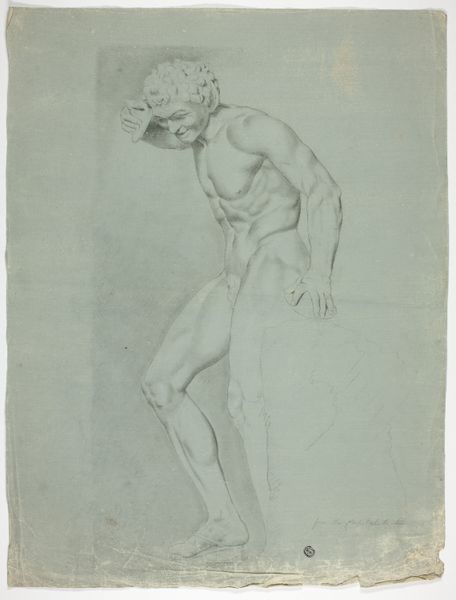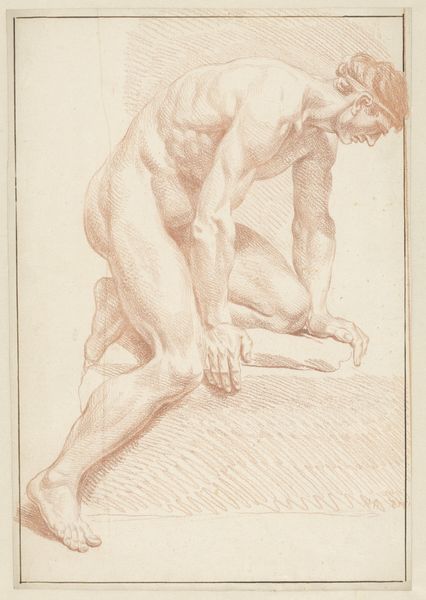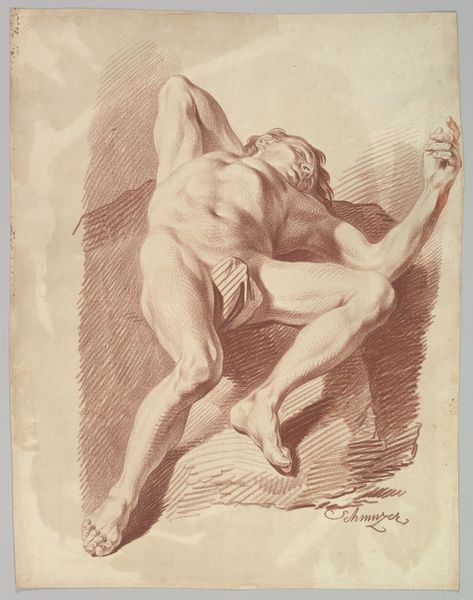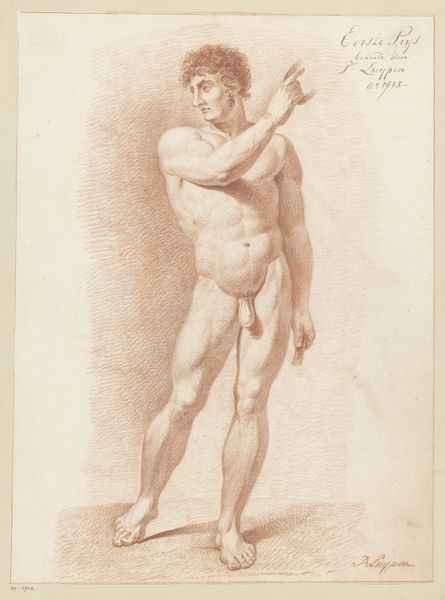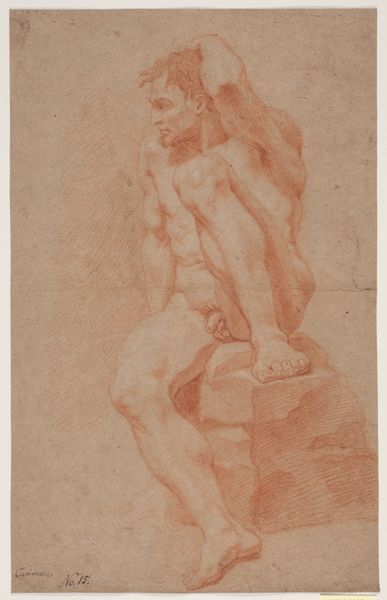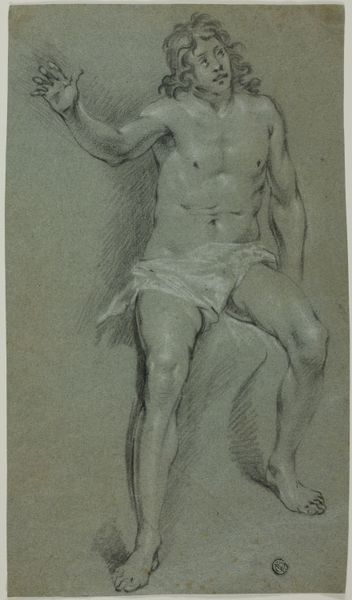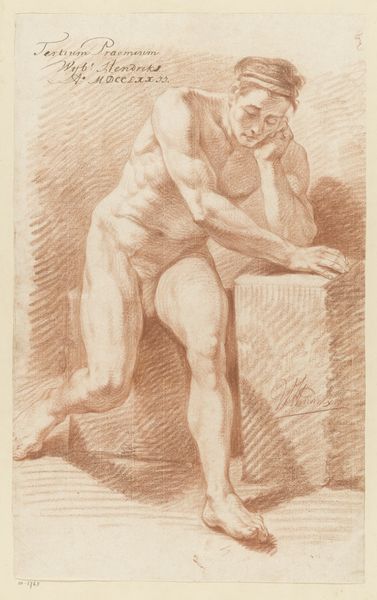
drawing, paper, pencil
#
drawing
#
figuration
#
paper
#
pencil
#
academic-art
#
nude
#
realism
Dimensions: height 537 mm, width 348 mm
Copyright: Rijks Museum: Open Domain
Editor: Here we have "Study of a statue of an athlete," a pencil and paper drawing from sometime between 1809 and 1869 by Alexander Cranendoncq. It's currently held at the Rijksmuseum. My initial impression is one of tension; the figure is pushing hard against something. How do you interpret this work? Curator: What stands out to me is the way Cranendoncq positions this male nude within the context of academic art, nodding to classical ideals. But what does it mean to depict the male form in this way during the 19th century? Can we see the power dynamics at play when we look at a figure seemingly frozen in an eternal struggle? Is it possible that it critiques power structures? Editor: I hadn't considered it that way. It does seem like the figure is actively pushing against something rather than striking a passive pose, which challenges my understanding of similar neoclassical figures. The very act of straining against an unseen force implies resistance. Curator: Exactly. Consider the potential tension between the objectification of the male nude and the representation of labour. Who has the privilege of viewing this form, and what political messages can be discerned? Can we read this strain as symbolic of broader societal tensions, the labour of a body contorted to another's artistic intentions? Editor: So, this drawing is doing much more than just demonstrating skill in rendering the human form; it's potentially raising questions about the very nature of labor, the gaze, and power itself within the structures of society at the time. Curator: Precisely. By thinking through these layers, we move beyond a surface-level reading and begin to unravel some of the complexities embedded within seemingly straightforward artistic representation. Editor: I will definitely keep this in mind the next time I come across this type of academic drawing. Thanks.
Comments
No comments
Be the first to comment and join the conversation on the ultimate creative platform.
